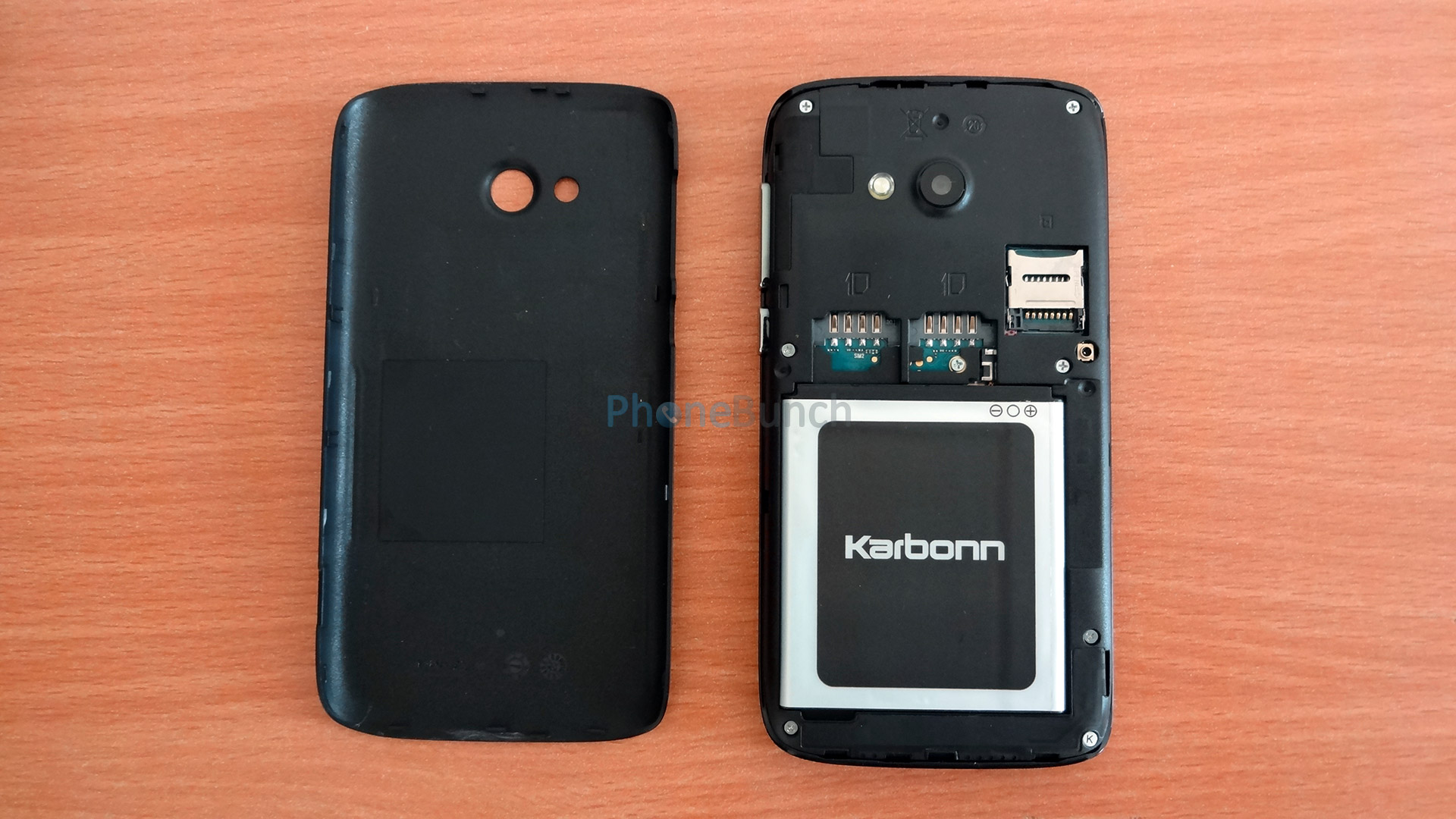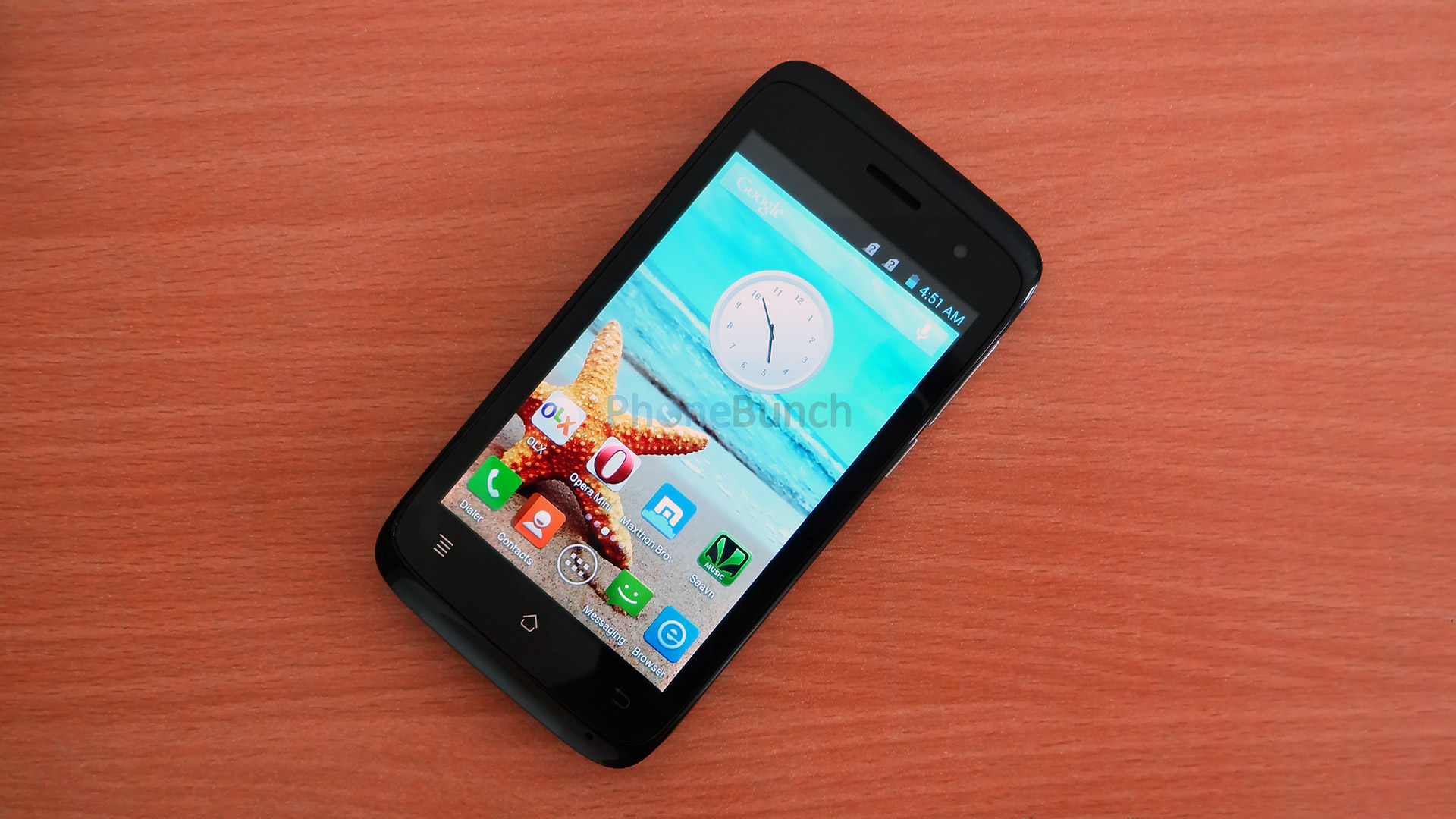Karbonn Titanium S1 Plus Unboxing

Karbonn launched the Titanium S1 Plus to combat the Lava Iris 406Q, with exact same specifications including the quad-core Snapdragon 200 innards, 1 GB RAM running Android 4.3 Jelly Bean. Although the battery capacity is a bit less at 1500 mAh opposed to 1700 mAh on the Iris 406Q. Both devices look quite difference from each other. But the Iris 406Q has a terrible display and is plagued with heating issues, what remains to be seen if the Titanium S1 Plus faces the same issues or is it a viable alternative. Let's have a look at the Titanium S1 Plus in our unboxing.
Unboxing Video
In the Box
Although Lava packed a lot of stuff with the Iris 406Q, Karbonn doesn't do the same. Considering that the S1 Plus costs about Rs. 1000 less than the 406Q, the omissions are definitely acceptable.
Here are the box contents:
- Titanium S1 Plus
- User Manual
- Wired Headset
- USB Wall Charger
- USB Data-Cable

All accessories are good in quality, you also have an indicator LED on the charger to show its working.
Hardware Overview
The Karbonn Titanium S1 Plus packs a 1.2 GHz quad-core Snapdragon 200 processor with 1 GB RAM running Android 4.3 Jelly Bean right out of the box. You also have a 5 MP camera at the back with LED flash and a VGA front facing shooter. A 4-inch WVGA (480x800 pixels, 233 PPI) display can be found on the front with three capacitive buttons just below it as well as a proximity and light sensor alongwith the main earpiece up top. You also have an accelerometer available on the device.

There's 4 GB of internal storage out of which just 1 GB is available to the user. Connectivity options include Wi-Fi, Bluetooth, GPS, FM Radio as well as Dual-SIM capability. There are two full size SIM card slots alongwith a microSD card slot which can take upto 32 GB of storage.
Build
In terms of port locations, overall structure as well as layout of the SIM slots and battery, its surprisingly same as the Iris 406Q. However, the design of the phone is quite different. It is a bit more curved on the sides. All four sides taper inwards making the phone feel slimmer than it is. Giving it a better feel to hold in the hand than the more rectangular 406Q.

Coming to the front you have the 4-inch WVGA display with the capacitive buttons just below it. Then you have the main earpiece/speakerphone just above the display alongwith the proximity and light sensors as well as the VGA front-facing camera. The capacitive buttons do not light up, which is what we expected.

At the top you have the 3.5 mm audio jack as well as the microUSB data-syncing/charging port. While the microphone can be found at the bottom part.

On the right you have the power lock/unlock button as well as the volume rocker. Both have a metallic silver finish, which does look a bit cheap and unnecessarily stands out especially when everything else on the phone is black in color. They are comically large and wide for such a small phone. The buttons are a bit clicky, have less than adequate travel but don't make any noise which is a bonus.

Moving to the back you have a matte finished backcover which instantly makes the phone easier to hold and feels less cheap than the Lava Iris 406Q. You also get a 5 MP camera at the back alongwith a LED flash as well as Karbonn branding. The speakerphone is integrated with the main earpiece up-front.
Overall the build of the device is solid, there is no creaking or flex anywhere. But the backcover juts out a little bit from the bottom and you can feel it as if its larger in size.
First Impressions
The first thing we noticed apart from the similarities with the Iris 406Q is that the Karbonn Titanium S1 Plus has a far better display. It has better color reproduction and viewing angles. The design of the phone is better as well, making it easier to hold and look a lot more appealing.
The phone performs quite well too, there is no lag whatsoever and the new customized UI seems fluid. You can add more homescreens to the launcher, sort apps in the app drawer as well. You get several apps pre-installed not just the basic Google apps. Till now it seems that the Titanium S1 Plus is a better bet over the 406Q at least in terms of build and design, but there's more to see especially how it performs in our Benchmarks and Gaming Review.


















